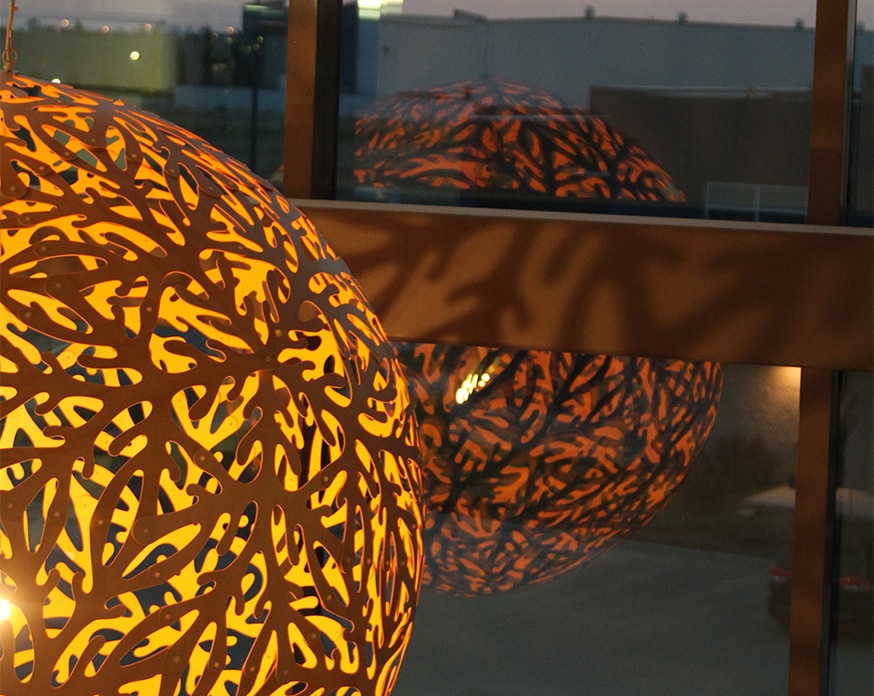Mosaic Center
Dennis Cuku and Christy Benoit, the co-founders of the Mosaic Centre in Edmonton, Alberta, met environmentalist and designer David Trubridge at the Living Future Conference in Seattle early in 2015. The three quickly realized that they shared a core value – to build things of beauty through sustainable practices; and it was with this mutual appreciation that the seeds of partnership between the Mosaic Centre and David Trubridge were sown.
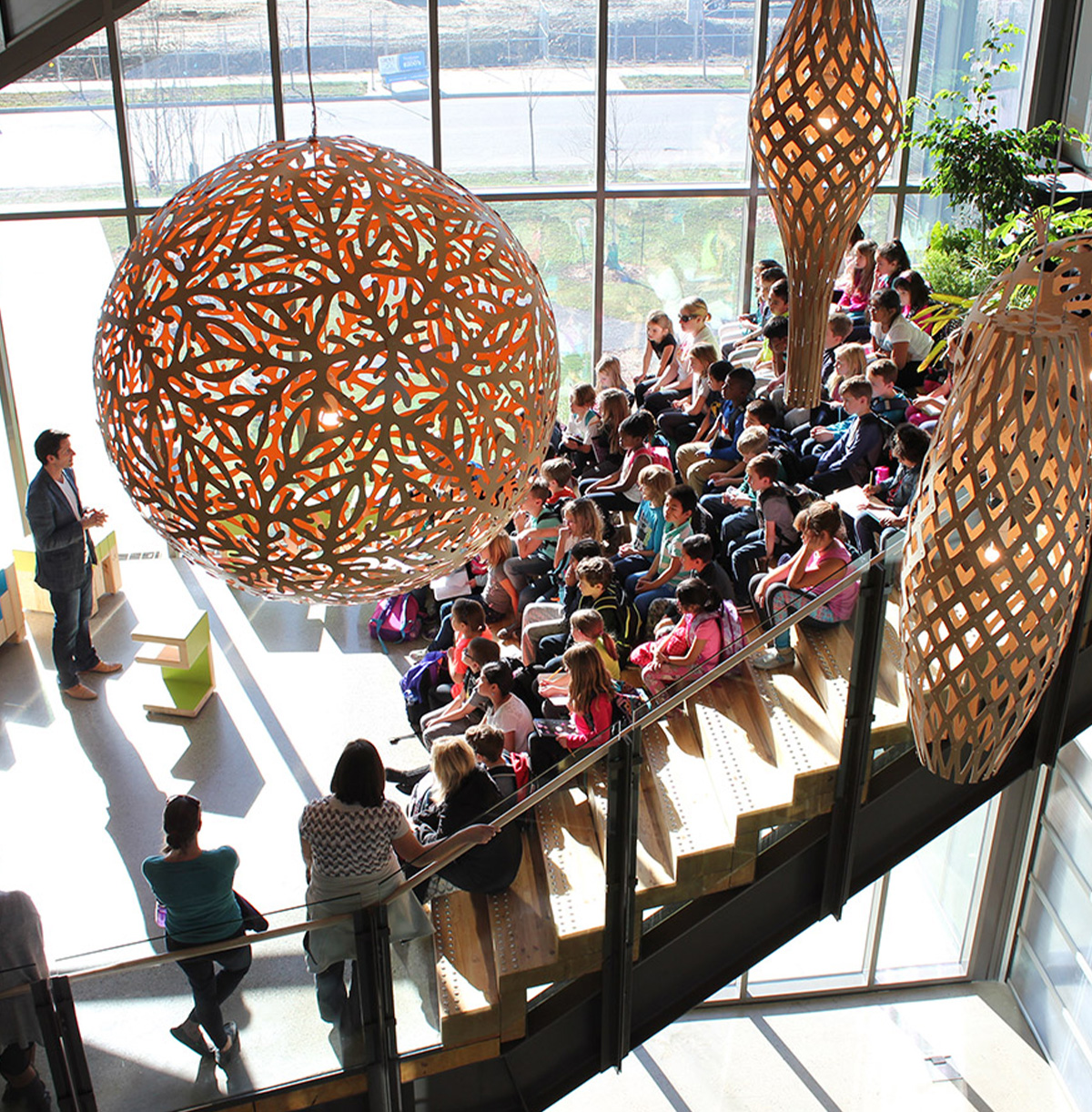
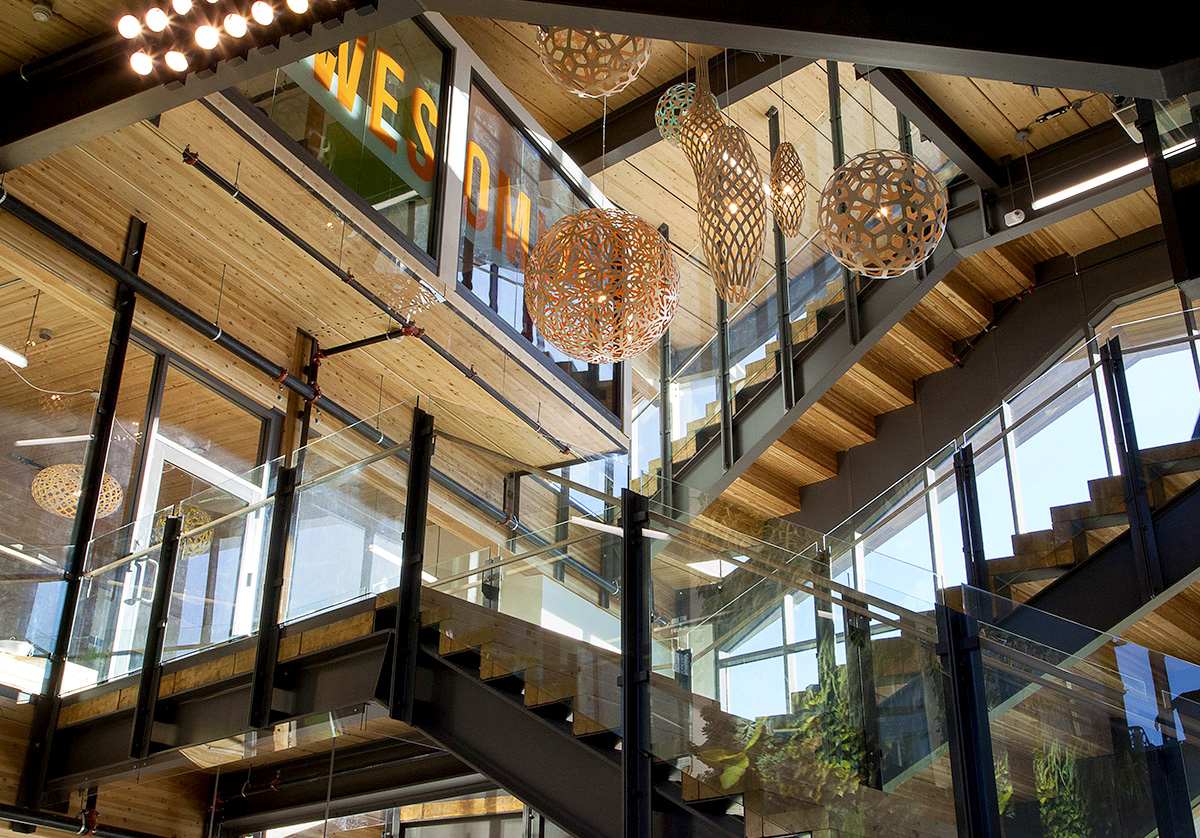
The concept behind the Mosaic Centre – Canada’s first net-zero commercial building – was a unique one: to build a beautiful building that produces as much energy as it consumes, all within a modest budget. Traditional building practices had, until then, sacrificed either beauty and aesthetics, or renewable resources and materials to counterbalance cost efficiency, so the Centre’s team had to innovate. As Vedran Skopac, the Mosaic Centre project’s architect says, “buildings are about people, not about construction material, and that is the most important thing.”
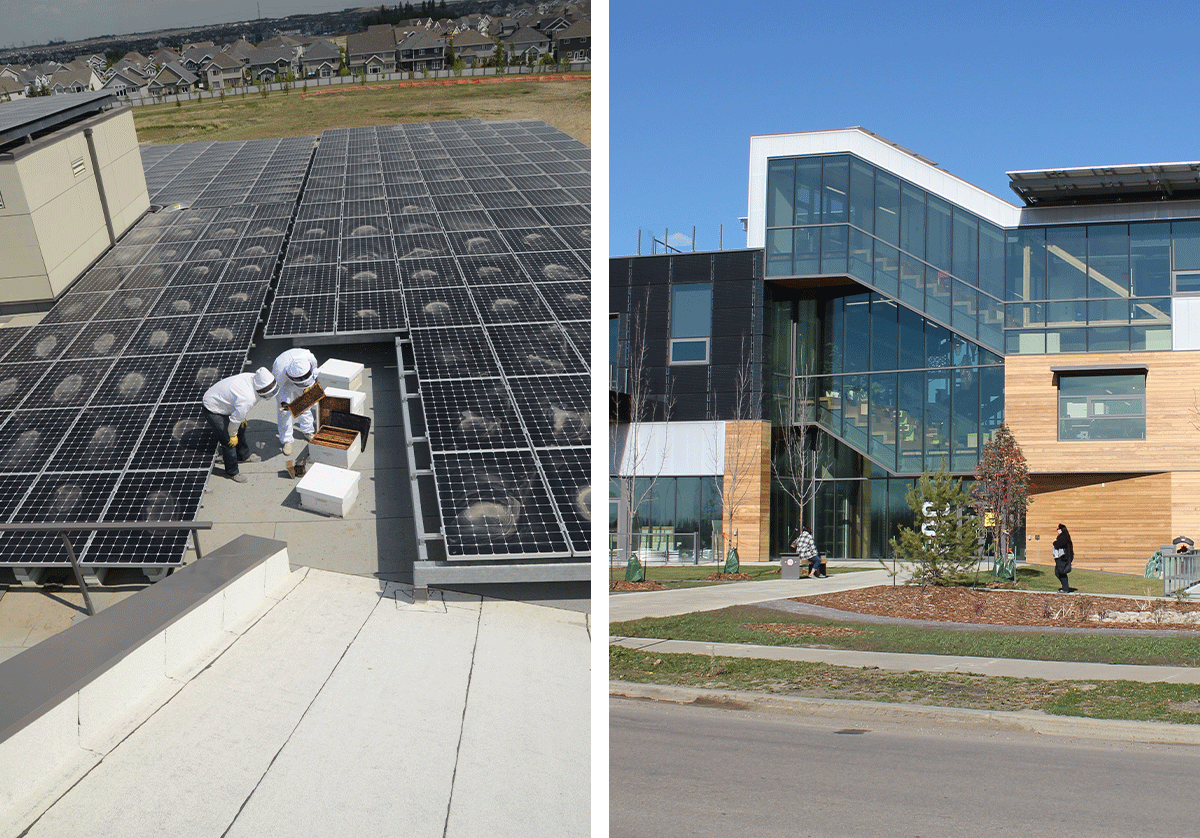
The Build
The Mosaic Centre called upon their community of partners to help them to initiate a paradigm shift in the Edmonton construction community, which has its roots in the oil industry, and to counter the ingrained belief that beautifully designed commercial buildings could not be both sustainable and affordably produced. To accomplish their dual goal, the team had to remain steadfast to their values at every step in the design and building process. And through a careful combination of ingenuity, efficiency and community, they achieved their goal. The Mosaic Centre was completed 6 months ahead of schedule, on budget, and now stands as a beacon of change for the city of Edmonton.
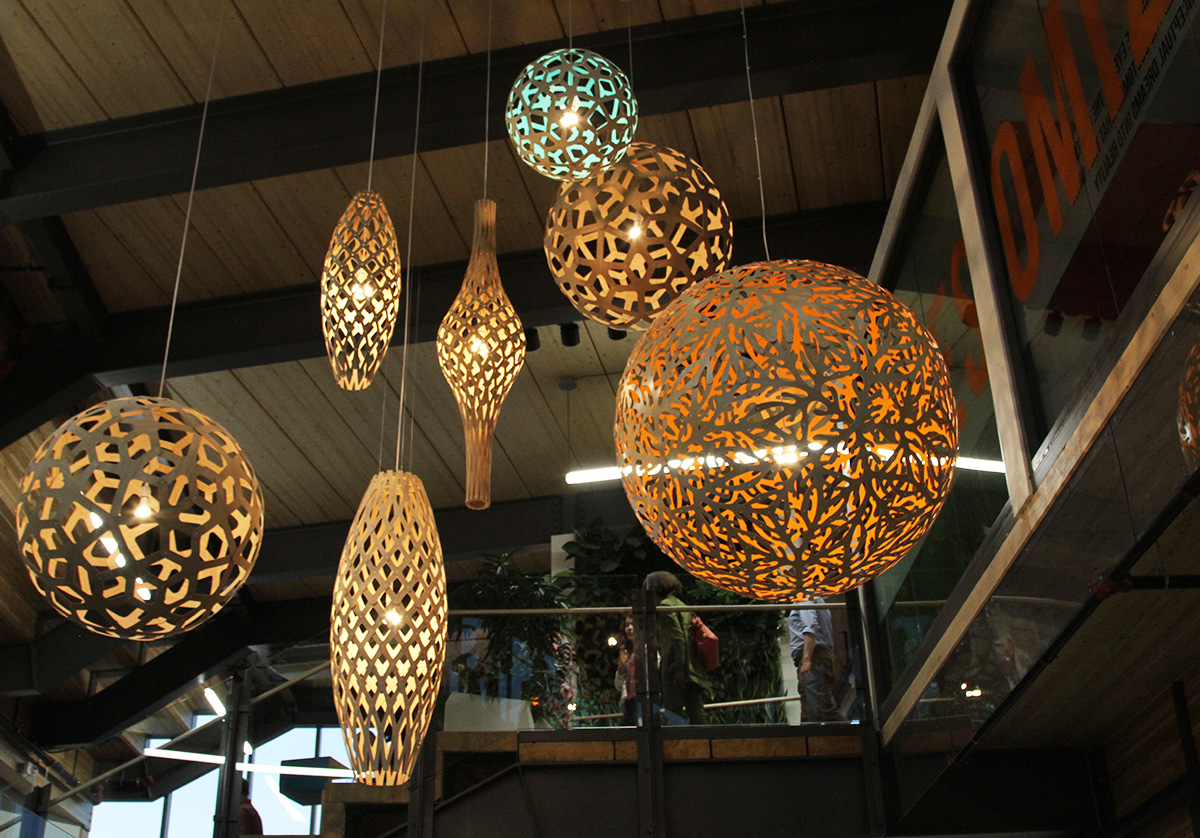
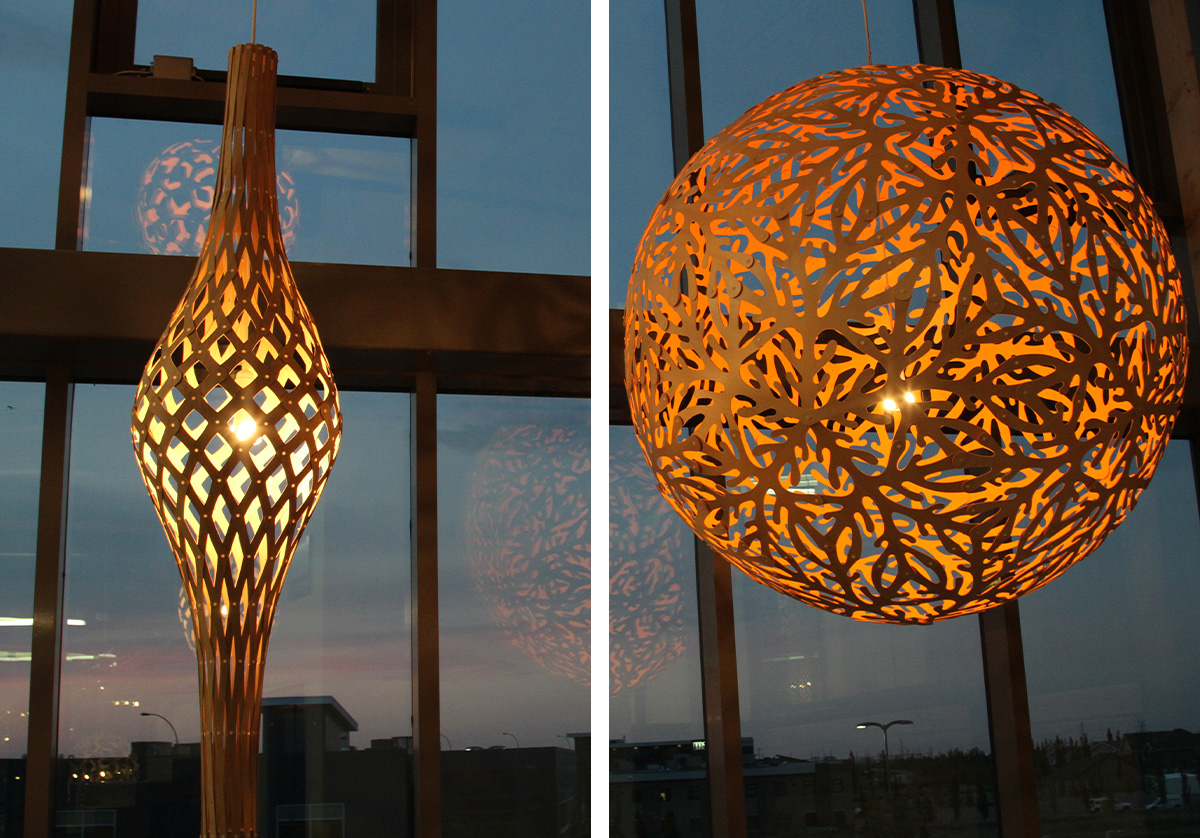
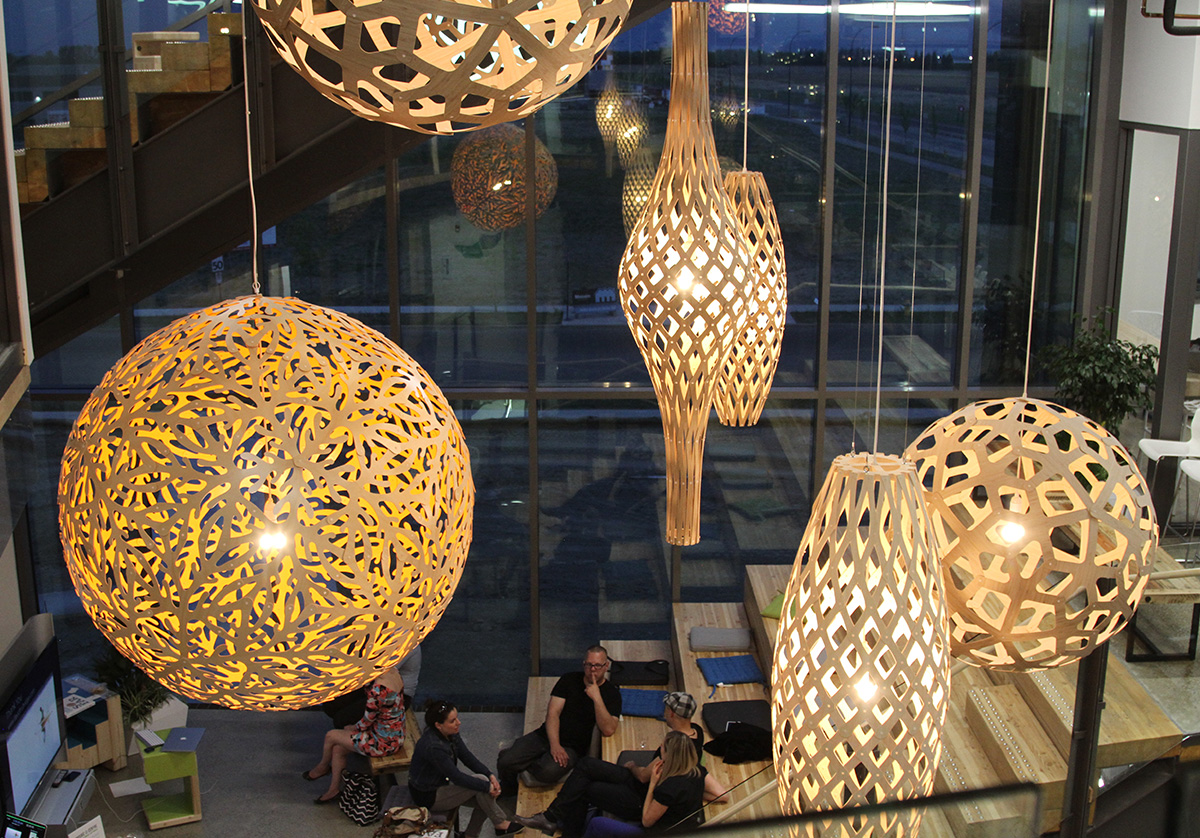
David Trubridge
David Trubridge is an internationally renowned lighting designer who is resolute in his mission to create sustainably produced products with a natural and beautiful aesthetic. Trubridge believes that the combination of these two principles directly affects the product’s sustainability, maintaining that consumers are less likely to discard products that are beautiful. His work came to prominence in 2001 when the Italian design house Cappellini bought the rights for Body Raft. The Coral light followed in 2004, establishing a blueprint for kit-set products that minimised environmental footprint. The company is proud to hold Life Cycles Assessments (LCA’s) and Environmental Product Declarations (EPDs). The company is driven by a strong environmental responsibility which informs all aspects of design and production, and tries to create an caring and enjoyable workplace for the employees. Such motivations come before profit.
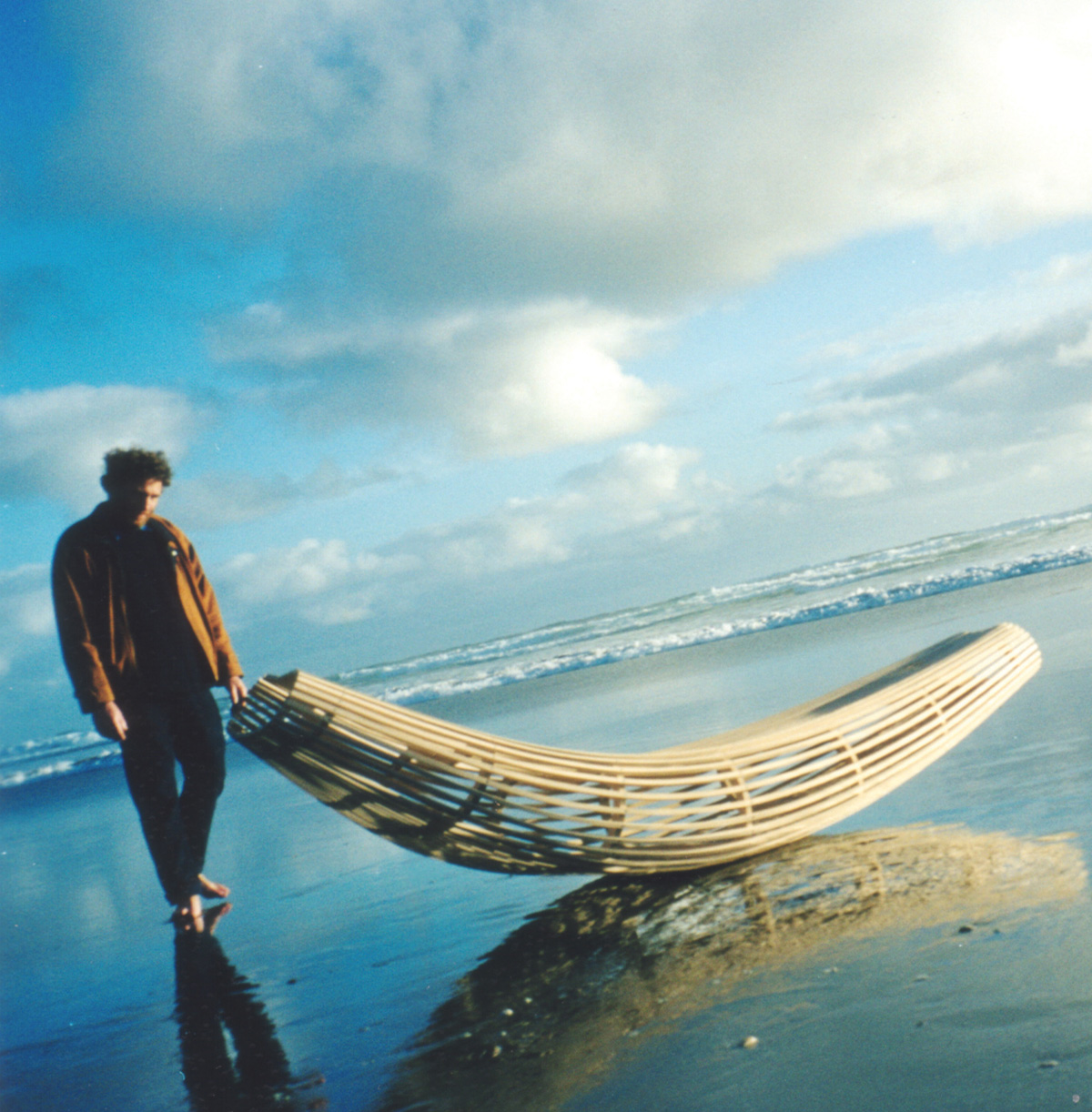
The Light Fixtures
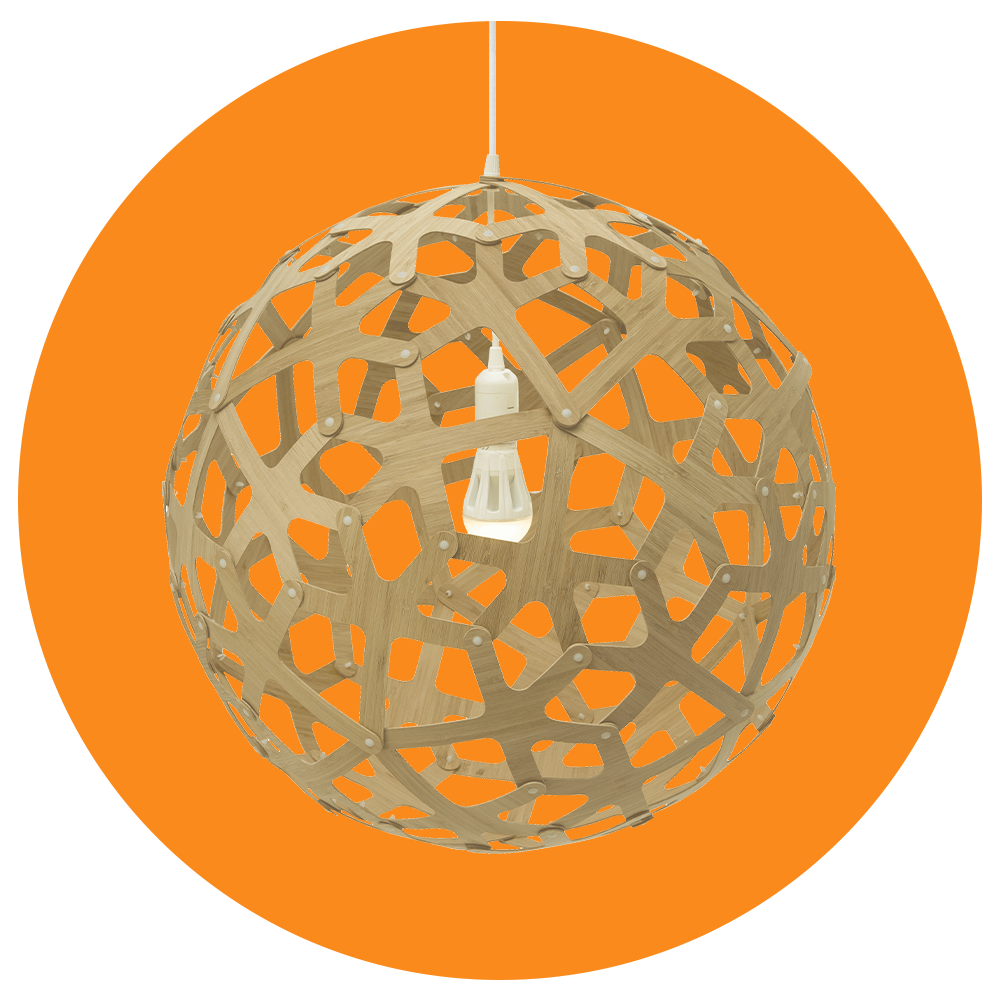
Light Fixture: The Coral
Size Options:
Coral 400 (16″ dia.)
Coral 600 (24″ dia.)
Coral 800 (31″ dia.)
Coral 1000 (39″ dia.)
Coral 1200 (47″ dia.)
Coral 1600 (63″ dia.)
Story
The Coral pendant light was David Trubridge’s first lighting design, created in 2002, and is now considered a design classic.
As with many of Trubridge’s award-winning designs, the Coral pendant was developed through play. The Coral fixture is based on one of the geometric polyhedra that have interested Trubridge since he was a boy. He developed the design over years experimenting with different materials and construction techniques before coming up with the current lighting design, which has maximum impact using minimal materials.
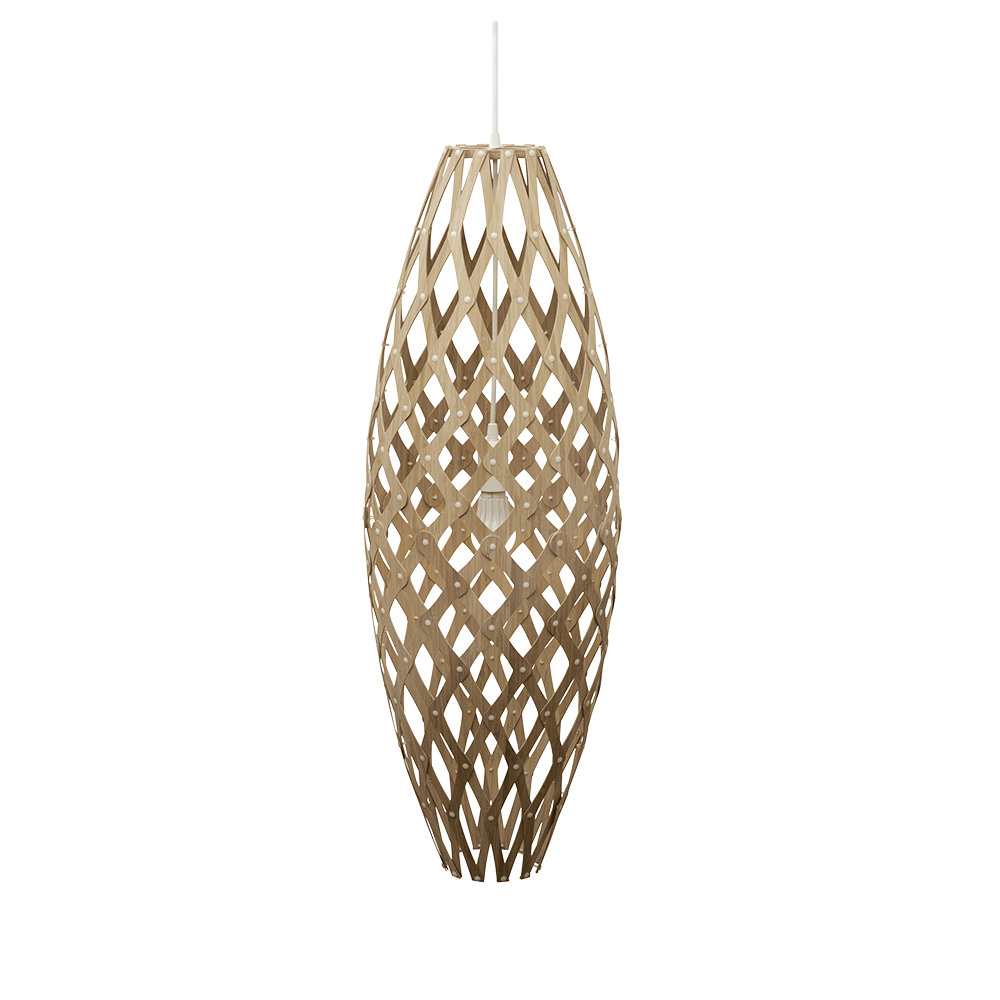
Light Fixture: The Hinaki
Size Options:
Hinaki 500 (7″w x 20″h)
Hinaki 900 (13″w x 35″h)
Hinaki 1400 (20″w x 55″h)
Story
The Hīnaki pendant light was David’s first exploration into lighting in 1995 when he made a prototype based on fish traps which are called hīnaki by Maori. Hīnaki traps were made from woven vines, some in amazingly beautiful forms.
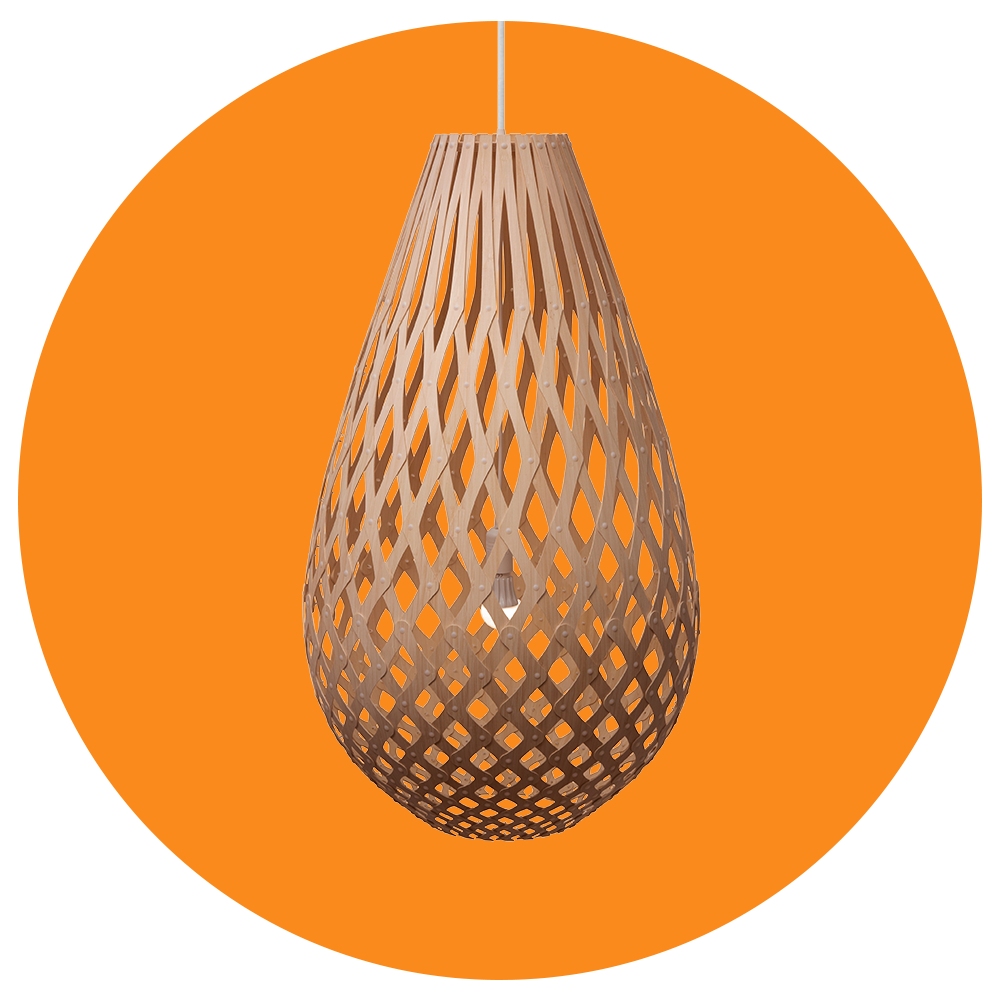
Light Fixture: The Koura
Size Options:
Kōura 500 (20″h x 12″ dia.)
Kōura 750 (29″h x 17″ dia.)
Kōura 1000 (39″h x 22″dia.)
Kōura 1600 (63″h x 37″dia.)
Kōura 2000 (79″h x 43″dia.)
Kōura 2400 (94″h x 55″dia.)
Story
The Kōura pendant light by David Trubridge is a droplet-like form, which mimics the curled form of native New Zealand marine species Kōura (named by the indigenous Māori people). The fixture is made from sustainable bamboo and is also inspired by the intricate traps used by early Māori to snare or store food.
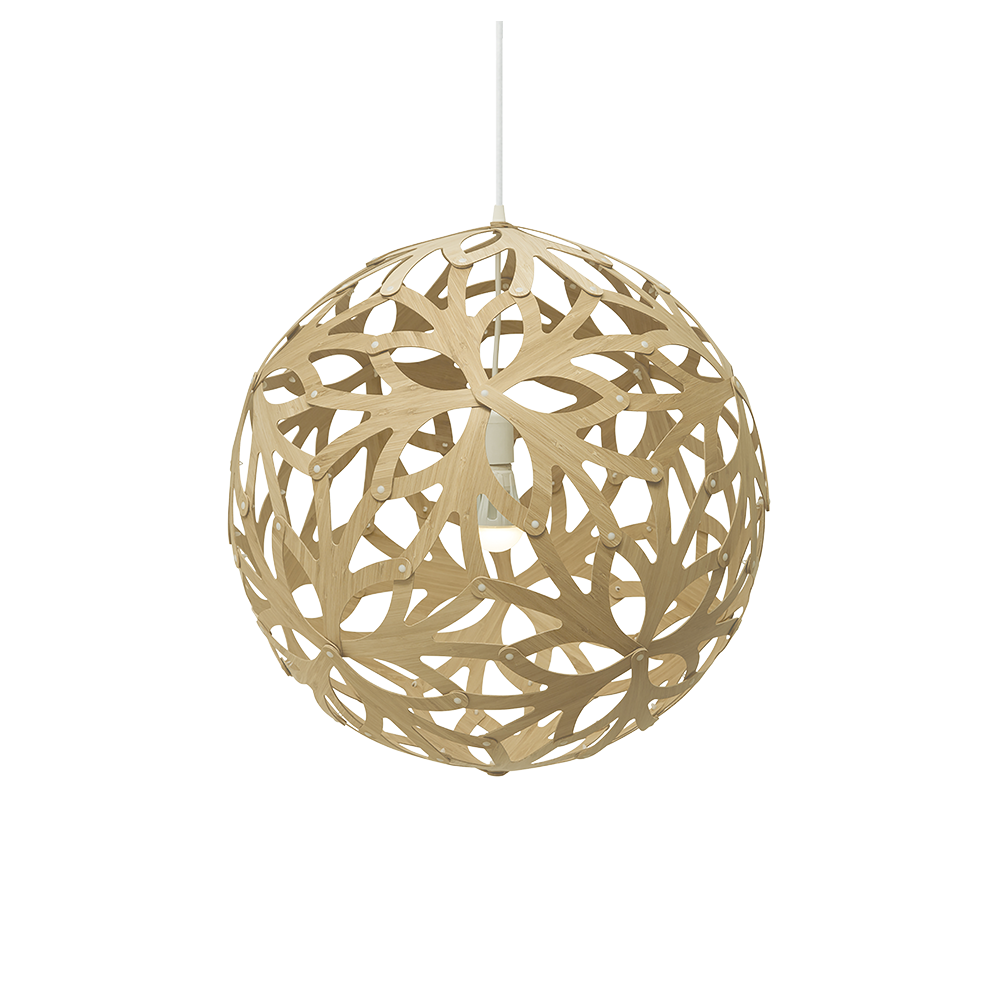
Light Fixture: The Floral
Size Options:
Floral 400 (16″ dia.)
Floral 600 (24″ dia.)
Floral 800 (31″ dia.)
Floral 1000 (39″ dia.)
Floral 1200 (47″ dia.)
Floral 1600 (63″ dia.)
Story
The Floral pendant light fixture (a curvy cousin of The Coral) reveals stunning flower-inspired shadows when illuminated- projecting intricate patterns on its surroundings.
Floral was designed three years after Coral light (which is based on geometric polyhedra forms). The Floral design was modified to offer a softer, more decorative option in contrast to the Coral fixture – which is more structured.
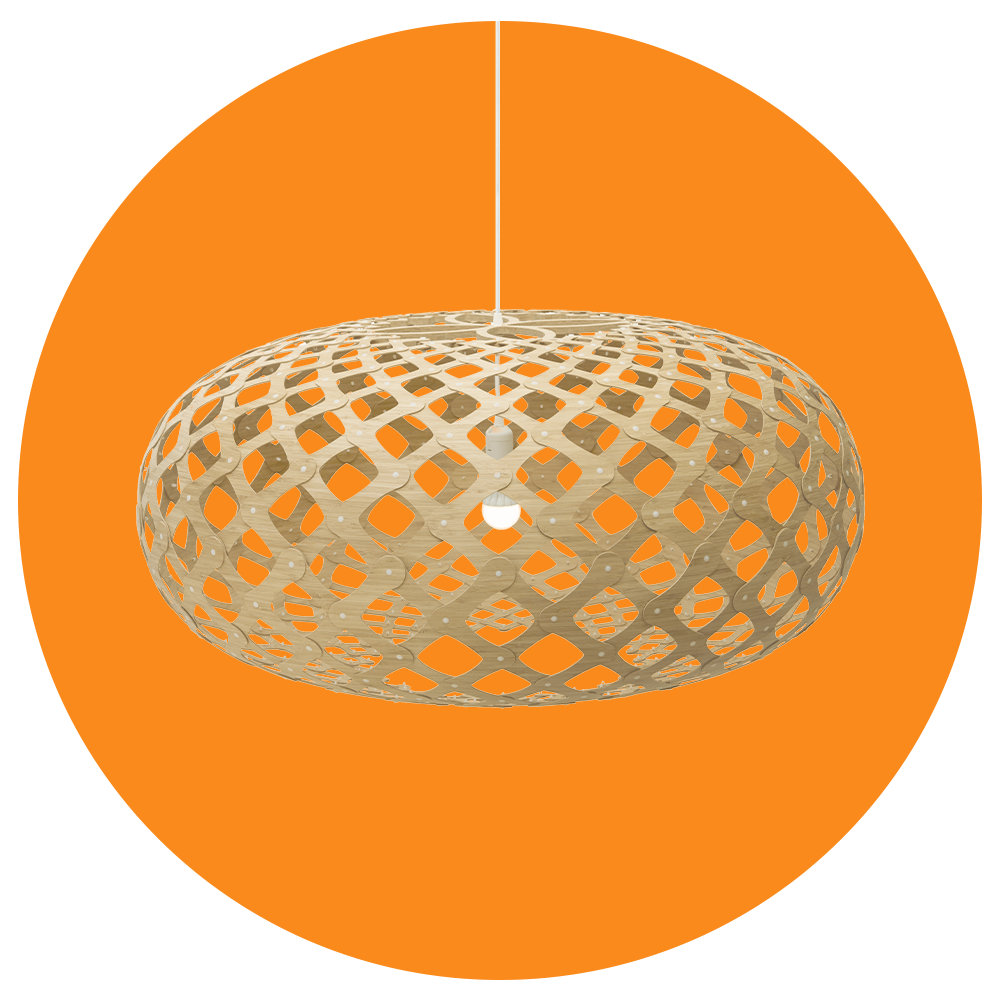
Light Fixture: The Kina
Size Options:
Kina 440 (8″h x 17″ dia.)
Kina 600 (11″h x 24″ dia.)
Kina 800 (15″h x 31″dia.)
Kina 1000 (17″h x 39″dia.)
Kina 1400 (26″h x 55″dia.)
Story
The form of the Kina pendant light fixture comes from the shell of a sea-urchin, which, in New Zealand, is called “kina” by the indigenous Māori people. Using the same mathematical formula as Coral and Floral, David Trubridge developed the design to mimic the form you see here. The size range makes Kina an ideal light fixture anywhere from a small bedroom right up to a large foyer or lobby.
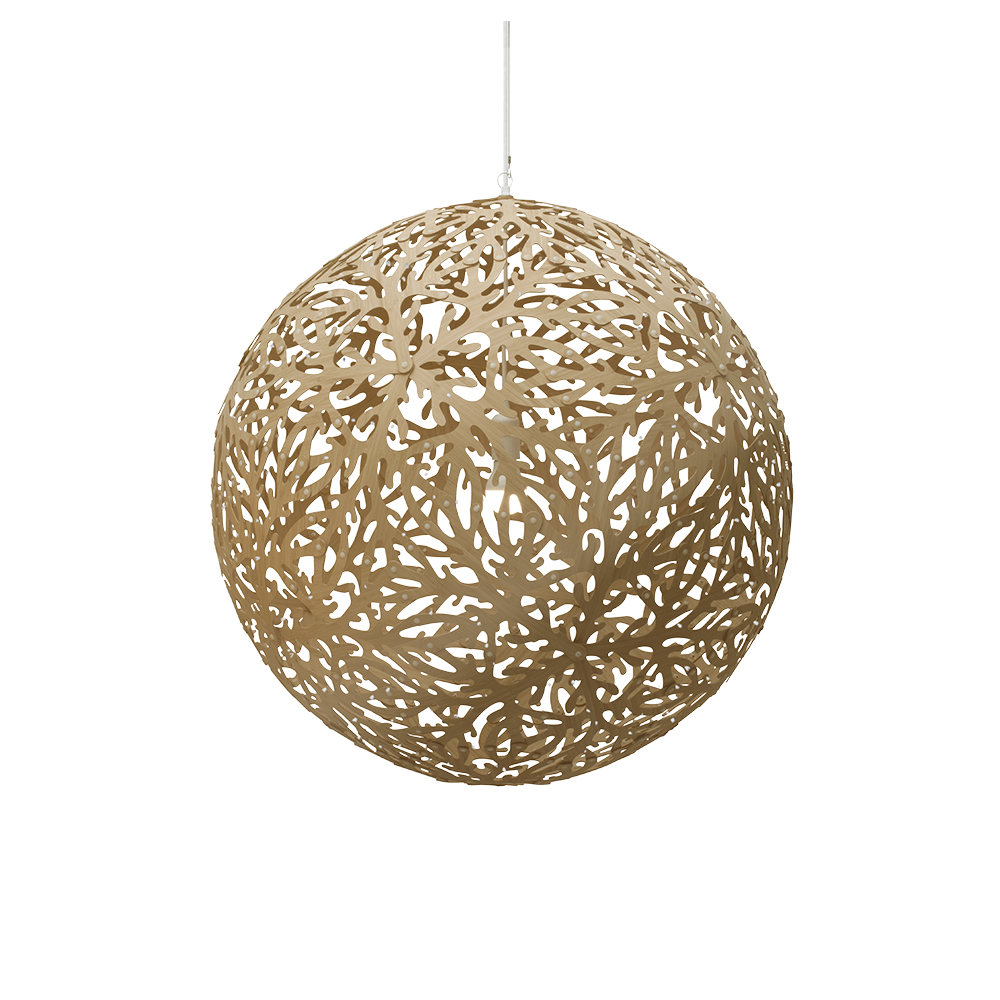
Light Fixture: The Sola
Size Options:
Sola 800 (31″ dia.)
Sola 1000 (39″ dia.)
Sola 1350 (53″ dia.)
Story
The Sola pendant light is made from 60 intricate bamboo pieces which project elaborate shadow patterns that dance along the surface of its surroundings. Sola is a complex design in appearance but it is based on the same simple geometry of Coral and Floral pendant lights, which reside in the same family of fixtures. The Sola is sure to make a strong statement with its highly decorative skin of frond-like fingers which can imitate sun flares, especially when an orange finish is chosen for the inside.

